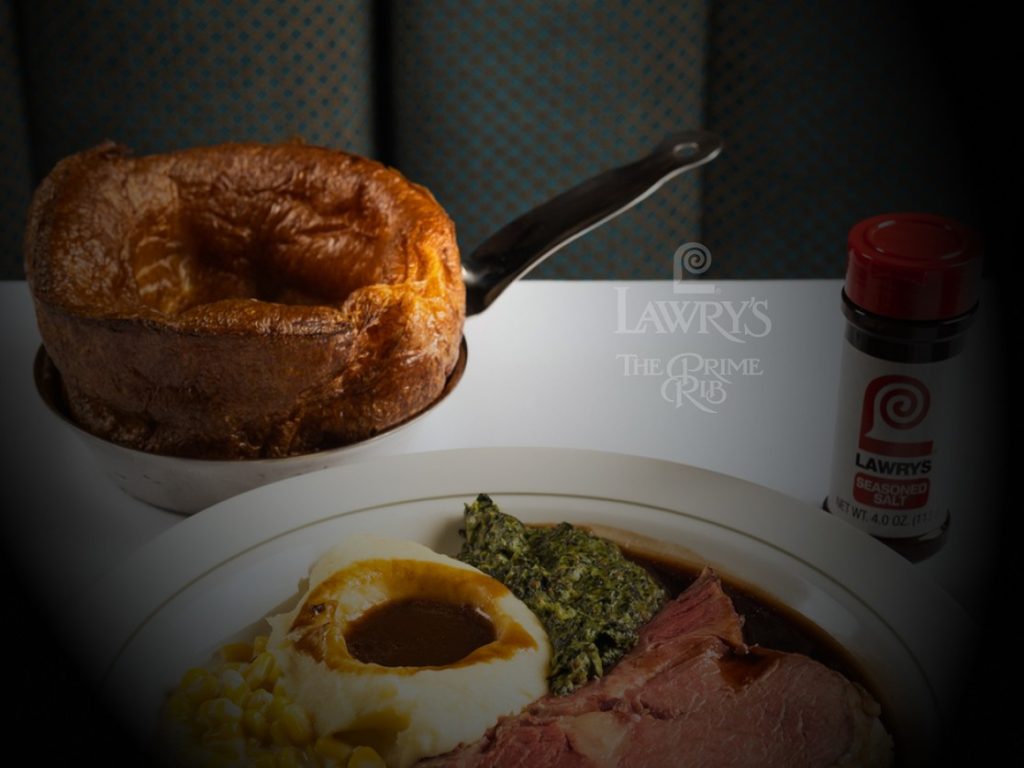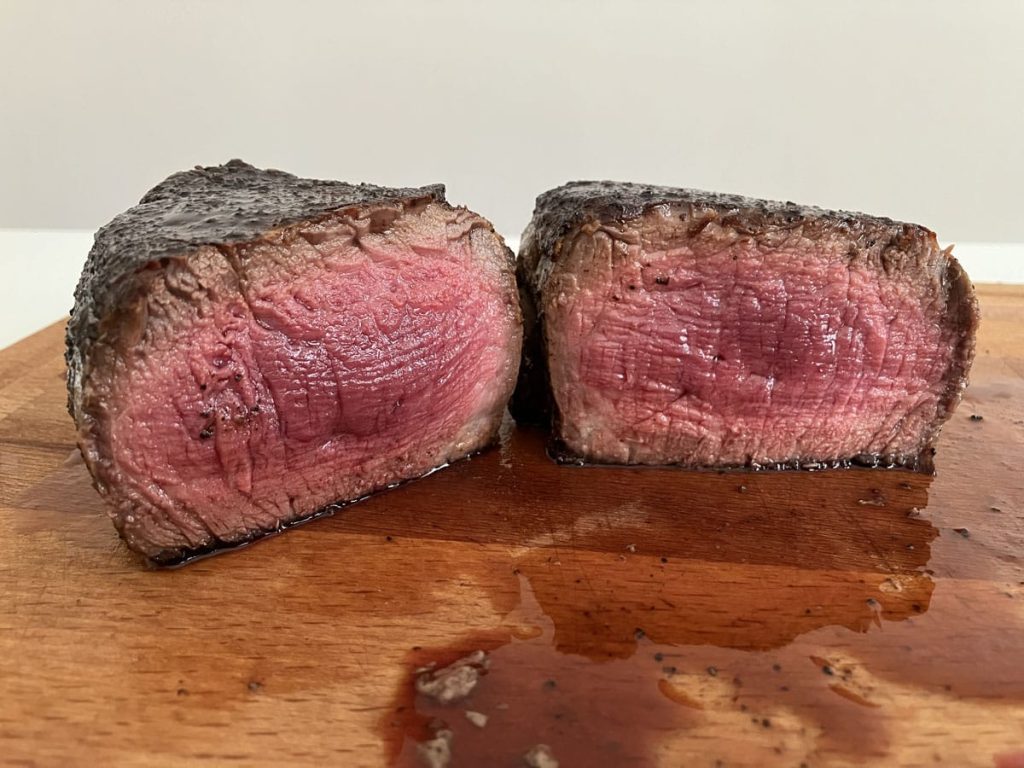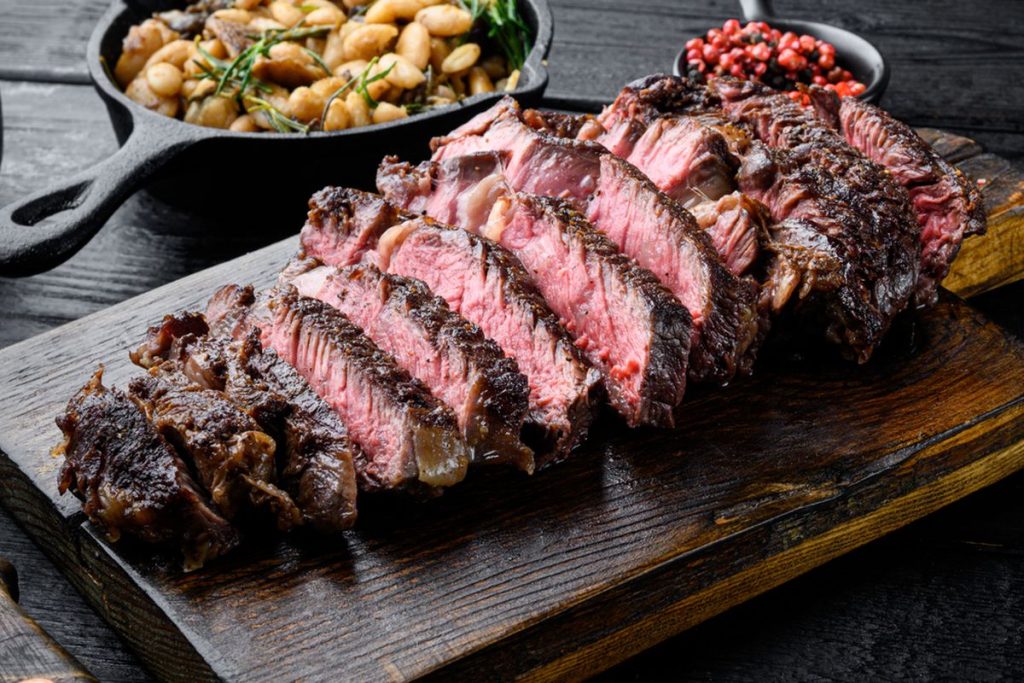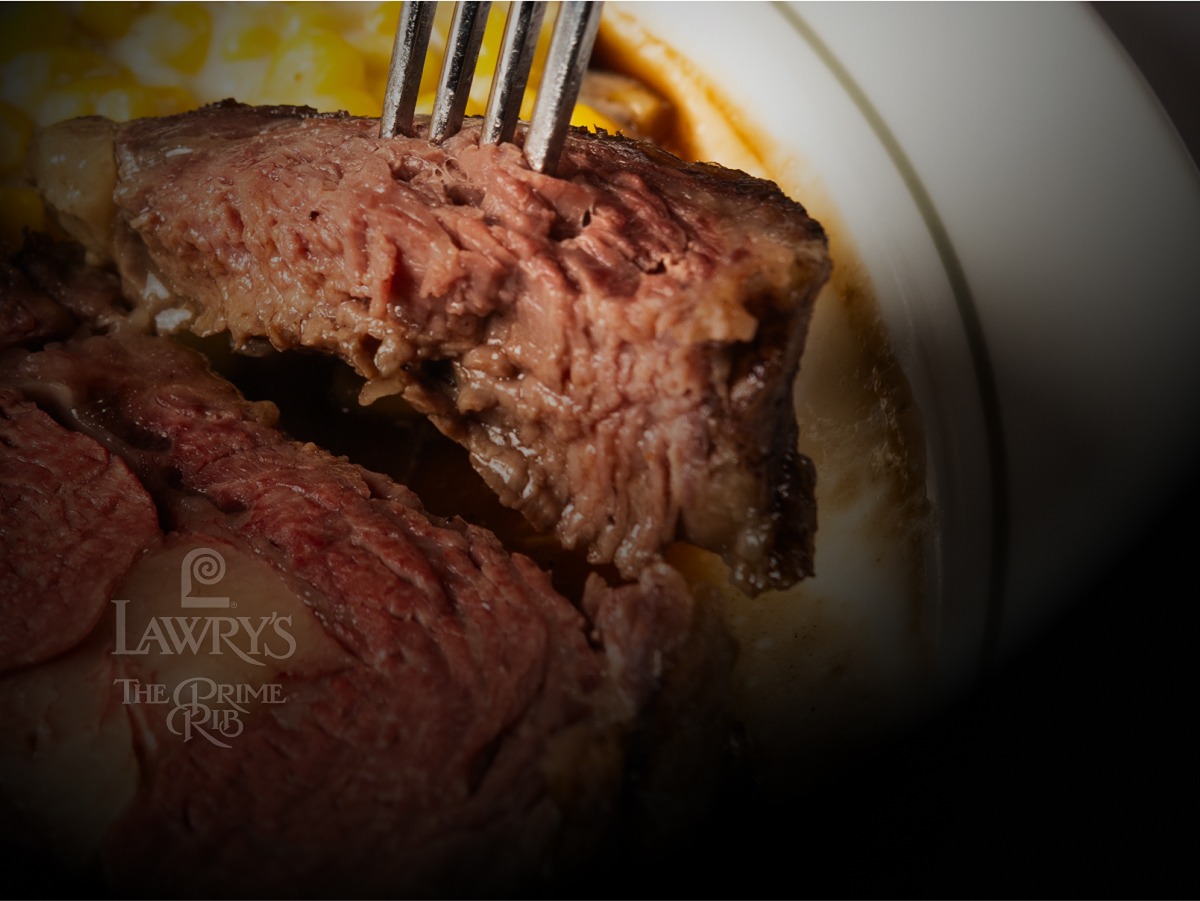
5 Cooking Levels of Steak – Which One is Your Favorite?
Tender, succulent, and bursting with flavor, a perfectly cooked steak is a culinary delight cherished by many. The level of doneness of a steak can significantly affect its taste and flavor, but those who aren’t familiar with the details might struggle to choose the best option. However, there is no reason to fret, as we are here to explain the five levels of steak doneness and help you discover your favorite. This way, you’ll know exactly what to order when you visit the best fine dining establishments in Jakarta.
There are two parts to grilling a gorgeous cut of steak: achieving a consistent internal temperature and searing. The internal temperature determines the steak’s level of doneness, while searing creates the coveted Maillard effect, adding flavor and texture.
Table of Contents
ToggleWhat We are Doing When Cook The Meat?
Generally, when you cook the meat, you are doing three things to it. First is breaking down the proteins. Muscle points are broken down, which are usually tightly balled, and then they will begin to unwind. This is why rawer steaks are chewier than more cooked ones. Next, it will evaporate the water within the meat. Roughly ¾ of a steak’s muscle fibers are made of water. As you cook a steak, that water evaporates. Hence why a well-done steak has less mass and less juiciness than a rare steak.
And lastly, as you cook your steak, the small streaks and pockets of fat inside start melting. When the fat melts, it gets absorbed into the muscle. This gives your steak a better taste (fat contains the chemicals that give beef its flavor) and a smoother, more tender and buttery texture.
5 Levels of Steak Doneness
All of these processes come down to five levels of steak doneness:
1. Rare (49°C/120°F)
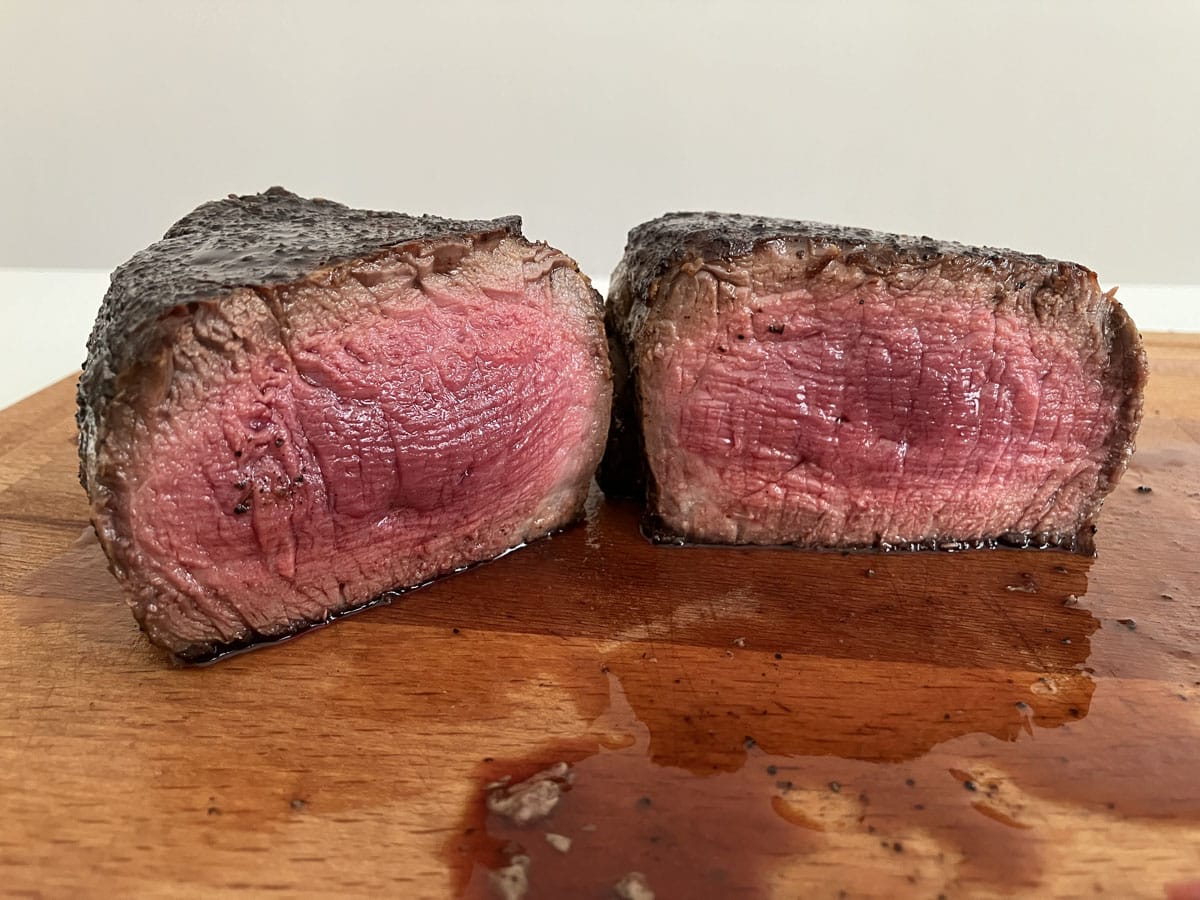
Picture a steak with a warm, red center hugged by a lightly seared exterior, perfect for those leaner cuts that still pack a flavorful punch. This level of doneness is perfect for naturally tender and lean cuts like tenderloin (filet mignon) or flat iron steak, which don’t need much cooking to be delicious. If you enjoy a melt-in-your-mouth texture and want to taste the beef in its purest form, rare is a great choice.
2. Medium Rare (54°C/130°F)
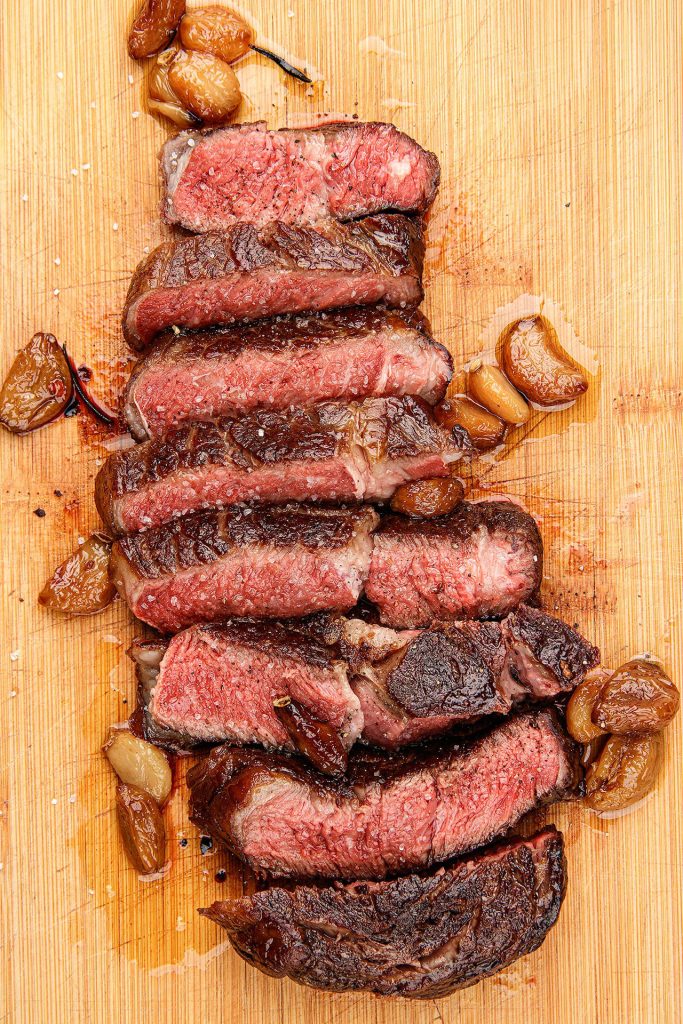
Considered the holy grail by many steak aficionados, medium level steak offers a tender, juicy steak with a center that’s just the right shade of red to tantalize your taste buds.
This level is ideal for marbled cuts like ribeye, New York strip, or tri-tip, where the fat starts to render, adding extra flavor and tenderness. If you’re looking for a steak that’s juicy, flavorful, and has just enough resistance when you bite, medium rare is the way to go.
Related article: Is Medium-Rare Steak Safe to Eat Get the Facts Here!
3. Medium (60°C/140°F)
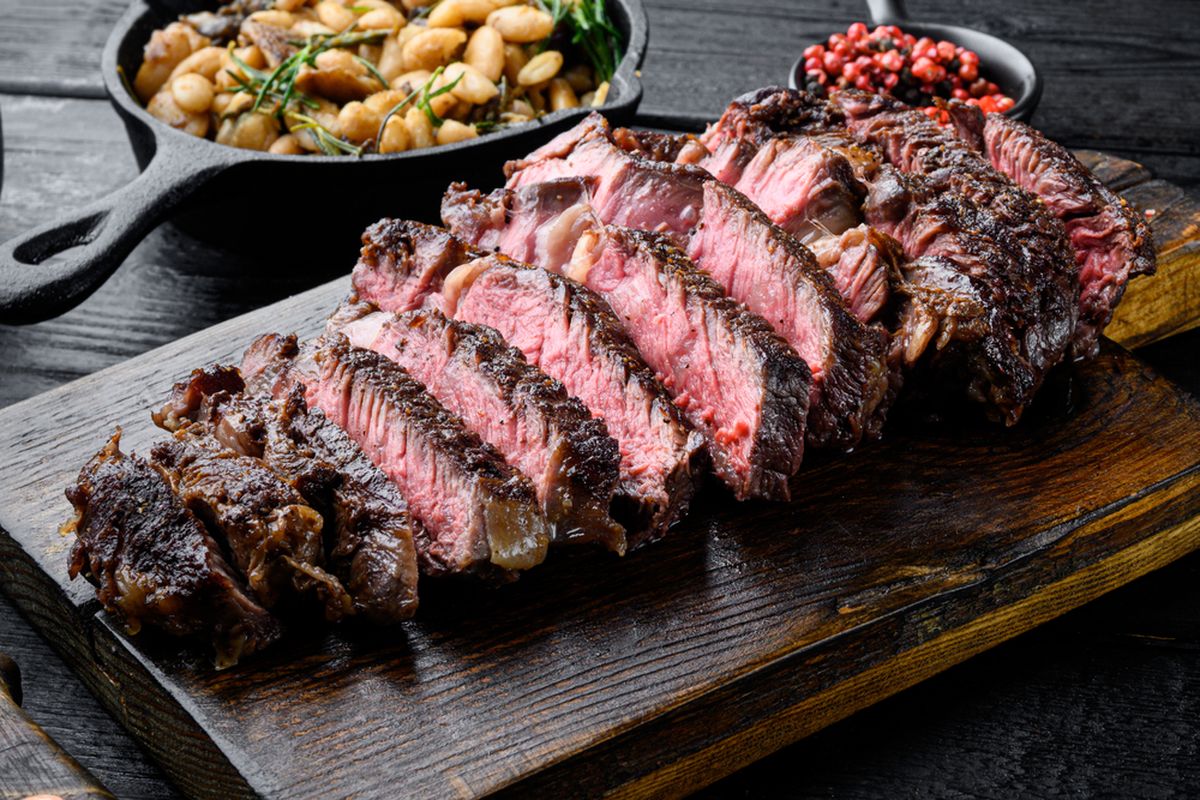
As you slice into a steak cooked to medium, you’ll find a lovely pink interior. While it retains the buttery texture and flavor, it’s slightly less juicy and tender than its medium-rare counterpart.
This doneness works well with cuts like top sirloin, flank steak, and skirt steak, which are flavorful and benefit from a bit more cooking. Just remember to slice them against the grain to keep them tender!
4. Medium Well (65°C/140°F)
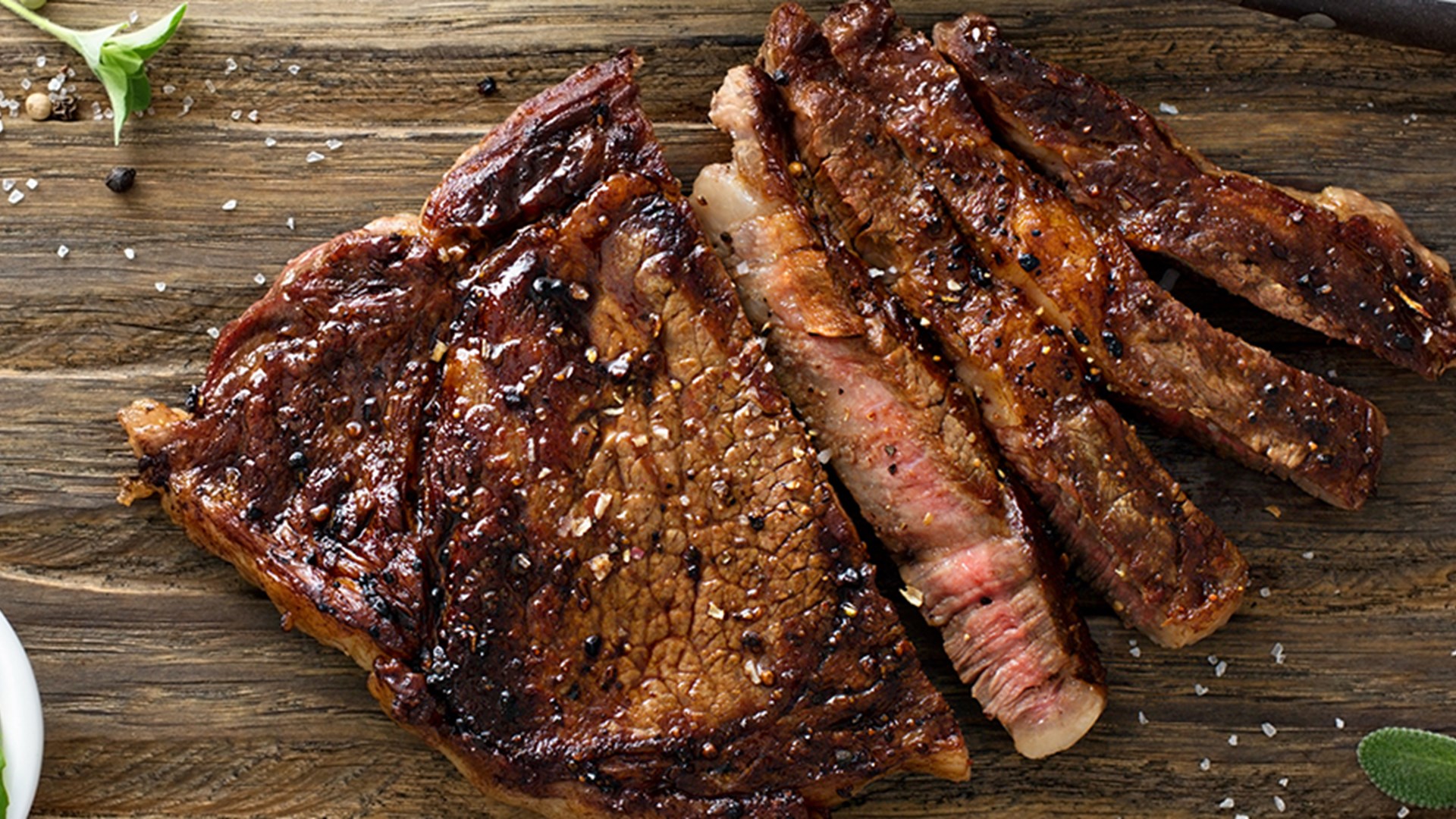
Here, you’ll find a steak with a hint of pink at the center, but it’s begun to lose some of its tender, juicy qualities, making it a choice for those who prefer a more well-cooked steak.
By this point, the steak starts to lose some juiciness and tenderness, but it can still be tasty with the right cut. Look for marbled and thicker cuts like chuck eye, Denver steak, or striploin to keep things from drying out. If you like your steak mostly done but still a little moist, this level might be for you.
5. Well Done (71°C/160°F)
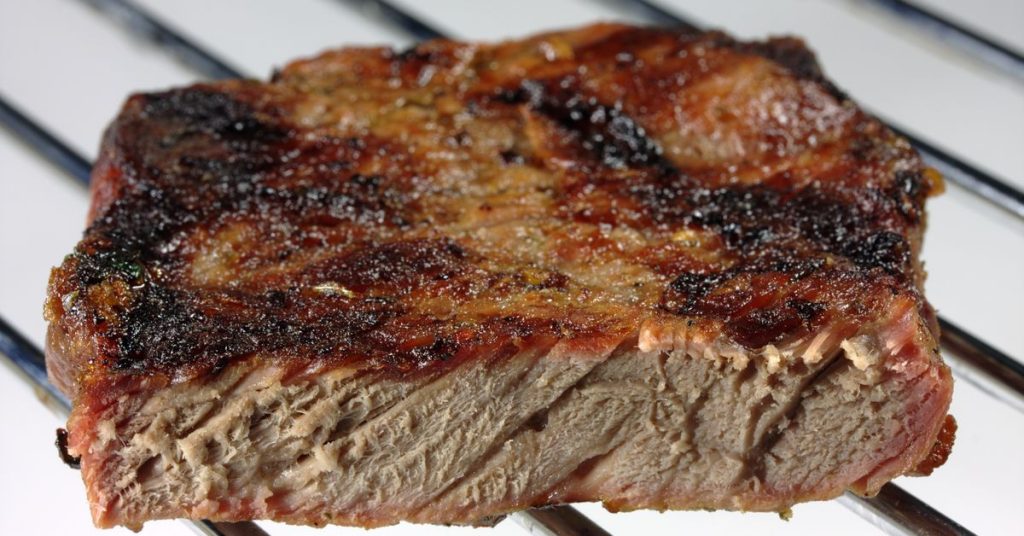
A steak cooked to well done is fully cooked through, often lacking the juiciness and tenderness of rarer steaks. Some might say it’s drier and tougher than desired, but to each their own!
While many steak purists avoid this level, some people genuinely enjoy their steak cooked this way. The key is choosing a cut that can handle the heat—ribeye, blade steak, or even brisket can stay relatively tender and flavorful even when well done, thanks to their fat and connective tissue.
Things That Affect the Way Your Steak Cooks
Cooking the perfect steak isn’t just about throwing it on a hot pan or grill but there’s actually a science behind it. Several factors can change how your steak cooks, from how thick it is to what kind of pan you use. Understanding these things helps you get that perfect sear, juicy inside, and delicious flavor every time. Let’s break down the key factors that affect how your steak cooks.
1. Thickness of the Steak
The thickness of your steak is one of the biggest factors that determines how it cooks. A thin steak (like 1–1.5 cm) cooks much faster and can easily become overdone if you’re not careful. It’s great for quick searing but tricky to keep medium-rare. A thick steak (around 2.5–4 cm), on the other hand, allows for better control — you can sear the outside beautifully while keeping the inside tender and juicy. That’s why chefs often prefer thicker cuts for grilling or pan-searing to perfection.
2. Starting Temperature
Did you know that the temperature of your steak before it hits the pan matters a lot? A cold steak straight from the fridge takes longer to cook and might end up overcooked outside while staying underdone inside. Letting your steak rest at room temperature for about 20–30 minutes before cooking helps it cook more evenly. This simple step can make a big difference between a tough steak and one that’s beautifully juicy from edge to edge.
3. Type of Cut
Not all steaks cook the same way because each cut has its own level of fat, tenderness, and texture. For example, tenderloin is very lean and cooks quickly, so it’s best with gentle heat to keep it soft and buttery. Ribeye and sirloin, on the other hand, have more fat (marbling), which means they can handle higher heat and still stay juicy. Knowing your cut helps you pick the right cooking method — grill, pan-sear, or oven-finish — to bring out the best flavor and texture.
4. Cooking Surface and Heat Level
Whether you’re using a cast-iron pan, grill, or stainless steel skillet, the surface makes a huge difference. Cast iron holds heat evenly and gives that gorgeous, caramelized crust, while a grill adds smoky flavor. The heat level matters too: high heat helps sear the outside and lock in juices, but if it’s too hot for too long, your steak can dry out. The trick is to sear on high heat first, then lower the temperature to finish cooking gently inside.
5. Fat Content and Marbling
Fat is also a built-in cooking helper. Steaks with good marbling (tiny streaks of fat within the meat) cook more evenly and stay moist because the fat melts during cooking, adding juiciness and flavor. Leaner cuts like tenderloin need extra attention or a touch of butter or oil to keep them from drying out, while fattier cuts like ribeye are naturally rich and forgiving.
6. Resting Time After Cooking
One of the most overlooked steps in cooking steak is letting it rest after it comes off the heat. When you cook meat, its juices move toward the center. If you cut into it immediately, all that flavorful juice spills out onto your plate instead of staying in the meat. Resting your steak for 5–10 minutes lets the juices redistribute, making every bite tender and juicy.
7. Seasoning and Moisture
How you season your steak also affects how it cooks. Salt draws moisture to the surface, which helps with browning, but if added too early, it can make the meat release too much water. Ideally, season right before cooking or about 40 minutes ahead if you want the salt to fully penetrate the meat. Patting your steak dry with paper towels before cooking also ensures a crisp, golden crust instead of steaming the meat.
8. Cooking Method and Doneness Preference
Finally, the method you use determines how evenly your steak cooks. Each method offers a different texture and flavor profile. And of course, your preferred doneness (rare, medium, or well-done) changes the cooking time. Using a meat thermometer is the easiest way to get it just right without guessing.
Now that you’re practically a steak doneness expert, it’s time to put that knowledge to the test. Time to peruse Lawry’s menu and indulge in our mouthwatering prime rib roasts and steaks!
FAQ
1. What are the different levels of steak doneness?
There are five levels: Rare (49°C), Medium Rare (54°C), Medium (60°C), Medium Well (65°C), and Well Done (71°C). Each offers a unique balance of tenderness, juiciness, and flavor.
2. Why does a well-done steak taste different from a rare steak?
As a steak cooks, water and fat content reduce, and proteins break down differently. This makes well-done steaks less juicy and tender, while rare steaks retain more moisture and a chewier texture.
3. What is the Maillard effect, and why is it important?
The Maillard effect occurs when the steak’s surface is seared, creating a flavorful crust that enhances the overall taste and texture of the steak.
5 Tingkat Kematangan Steak – Yang Mana Favorit Anda?
Lembut, empuk, dan penuh dengan rasa, steak yang dimasak dengan sempurna adalah kuliner lezat yang disukai oleh banyak orang. Tingkat kematangan steak dapat mempengaruhi rasa dan teksturnya secara signifikan, namun bagi mereka yang tidak terbiasa dengan detailnya mungkin akan kesulitan memilih opsi terbaik. Namun, tidak perlu khawatir, karena kami di sini akan menjelaskan lima tingkat kematangan steak dan membantu Anda menemukan opsi terbaik. Dengan begitu, Anda akan tahu persis apa yang harus dipesan saat mengunjungi restoran fine dining terbaik di Jakarta.
Apa yang Terjadi saat Memasak Steik?
Ada dua hal penting saat memanggang steik: suhu yang konsisten dan proses memanggang. Suhu menentukan tingkat kematangan steak, sementara proses memanggang menciptakan efek Maillard yang diinginkan, menambah rasa dan tekstur.
Secara umum, ketika Anda memasak daging, Anda melakukan tiga hal pada daging tersebut. Pertama adalah memecah protein. Titik-titik otot yang biasanya mengeras akan terurai dan mulai merenggang. Inilah mengapa steak yang lebih mentah lebih kenyal daripada yang lebih matang. Selanjutnya, air di dalam daging akan menguap. Sekitar ¾ serat otot steak terbuat dari air. Saat Anda memasak steak, air tersebut menguap. Itulah sebabnya mengapa steak yang matang sempurna memiliki massa dan kelembaban yang lebih sedikit dibandingkan steak yang setengah matang.
Dan terakhir, saat Anda memasak steak, lemak kecil dan kantong-kantong lemak di dalamnya mulai meleleh. Ketika lemak meleleh, lemak akan diserap ke dalam otot. Ini memberi steak Anda rasa yang lebih baik (lemak mengandung bahan kimia yang memberi rasa pada daging sapi) dan tekstur yang lebih halus, lembut, dan seperti mentega.
5 Tingkat Kematangan Steik
Semua proses ini menghasilkan lima tingkat kematangan steak:
1. Rare (49°C)
Bayangkan steak dengan bagian tengah yang hangat dan merah, dikelilingi oleh bagian luar yang sedikit hangus, sempurna dengan potongan yang lebih ramping namun tetap memberikan rasa yang kuat. Tingkat kematangan ini sangat cocok untuk potongan daging yang empuk dan tidak berlemak seperti tenderloin (filet mignon) atau flat iron steak, yang tidak memerlukan banyak waktu untuk dimasak agar lezat. Jika Anda menyukai tekstur yang meleleh di mulut dan ingin mencicipi daging sapi dalam bentuk yang paling murni, rare adalah pilihan yang tepat.
2. Medium Rare (54°C)
Dianggap sebagai yang terbaik oleh banyak penggemar steak, tingkat ini menawarkan steak yang empuk dan juicy dengan bagian tengah yang merah dan menggoda selera.
Tingkat kematangan ini ideal untuk potongan daging seperti ribeye, New York strip, atau tri-tip, di mana lemaknya mulai meleleh, menambah rasa dan kelembutan ekstra. Jika Anda mencari steak yang juicy, beraroma, dan memiliki daya tahan yang cukup saat digigit, tingkat kematangan medium rare adalah pilihan yang tepat.
3. Medium (60°C)
Saat Anda memotong steak dengan tingkat kematangan medium, Anda akan menemukan bagian dalam yang merah muda. Meskipun masih memiliki tekstur dan rasa yang lembut seperti mentega, steak ini sedikit kurang juicy dan empuk dibandingkan dengan medium rare.
Kematangan ini cocok untuk potongan seperti top sirloin, flank steak, dan skirt steak, yang beraroma dan mendapat manfaat dari pemasakan yang lebih lama. Ingatlah untuk mengirisnya berlawanan dengan arah serat agar tetap empuk!
4. Medium Well (65°C)
Pada tingkat ini, Anda akan menemukan steak dengan sedikit warna merah muda di tengahnya, tetapi sudah mulai kehilangan sedikit tekstur lembut dan juicy-nya, membuatnya menjadi pilihan bagi mereka yang lebih suka steak yang lebih matang.
Pada titik ini, steak mulai kehilangan rasa juicy dan kelembutannya, namun masih tetap lezat dengan potongan yang tepat. Carilah potongan yang lebih tebal seperti chuck eye, Denver steak, atau striploin agar tidak kering. Jika Anda menyukai steak yang hampir matang namun masih sedikit lembab, tingkat kematangan ini mungkin cocok untuk Anda.
5. Well Done (71°C)
Steak yang dimasak dengan tingkat kematangan well done sepenuhnya matang, seringkali kurang juicy dan empuk dibandingkan steak yang lebih mentah. Beberapa mungkin mengatakan steak ini lebih kering dan lebih keras daripada yang diinginkan, tetapi setiap orang memiliki selera masing-masing!
Meskipun banyak penggemar steak yang menghindari tingkat kematangan ini, beberapa orang benar-benar menikmati steak yang dimasak dengan cara ini. Kuncinya adalah memilih potongan yang tahan terhadap panas-ribeye, blade steak, atau bahkan brisket dapat tetap empuk dan beraroma meskipun dimasak dengan baik, berkat lemak dan jaringan ikatnya.
Hal-hal yang Mempengaruhi Cara Steak Anda Matang
Memasak steak yang sempurna bukan hanya soal meletakkannya di atas wajan panas atau panggangan — ada ilmu di baliknya. Beberapa faktor dapat memengaruhi cara steak Anda matang, mulai dari ketebalannya hingga jenis wajan yang digunakan. Memahami hal-hal ini membantu Anda mendapatkan bagian luar yang matang sempurna, bagian dalam yang juicy, dan rasa yang lezat setiap kali memasak. Yuk, kita bahas faktor-faktor utama yang memengaruhi cara steak matang.
1. Ketebalan Steak
Ketebalan steak adalah salah satu faktor paling penting yang menentukan cara daging matang. Steak tipis (sekitar 1–1,5 cm) matang jauh lebih cepat dan bisa mudah overcooked jika tidak hati-hati. Potongan seperti ini cocok untuk searing cepat, tapi sulit untuk mempertahankan tingkat kematangan medium-rare. Sementara itu, steak tebal (sekitar 2,5–4 cm) memberi Anda kontrol lebih baik — bagian luar bisa disear dengan cantik, sementara bagian dalam tetap empuk dan juicy. Itulah mengapa banyak koki profesional lebih memilih steak tebal untuk dipanggang atau dimasak di wajan hingga sempurna.
2. Suhu Awal Daging
Tahukah Anda bahwa suhu steak sebelum dimasak sangat berpengaruh? Daging yang masih dingin langsung dari kulkas membutuhkan waktu lebih lama untuk matang dan sering kali membuat bagian luar terlalu matang sementara bagian dalam masih mentah. Membiarkan steak beristirahat di suhu ruang selama 20–30 menit sebelum dimasak membantu proses pemasakan menjadi lebih merata. Langkah sederhana ini bisa menjadi pembeda antara steak yang keras dan steak yang juicy dari ujung ke ujung.
3. Jenis Potongan Daging
Tidak semua steak matang dengan cara yang sama, karena setiap potongan memiliki kadar lemak, kelembutan, dan tekstur yang berbeda. Misalnya, tenderloin sangat ramping dan cepat matang, sehingga paling cocok dimasak dengan panas yang lembut agar tetap empuk dan buttery. Ribeye dan sirloin, sebaliknya, memiliki lebih banyak lemak (marbling), sehingga bisa menahan panas tinggi tanpa kehilangan kelembutan. Mengenali jenis potongan daging membantu Anda memilih metode memasak yang tepat — apakah dipanggang, disear di wajan, atau diselesaikan di oven — untuk mengeluarkan rasa dan tekstur terbaik.
4. Permukaan dan Tingkat Panas Memasak
Baik Anda menggunakan wajan cast iron, panggangan, atau wajan stainless steel, permukaan alat masak sangat memengaruhi hasil akhir. Wajan cast iron menahan panas secara merata dan memberikan kerak karamelisasi yang cantik, sementara panggangan memberikan aroma asap khas BBQ. Tingkat panas juga penting — panas tinggi membantu menyegel bagian luar dan mengunci jus daging, tetapi jika terlalu panas atau terlalu lama, steak bisa menjadi kering. Triknya adalah sear di panas tinggi terlebih dahulu, lalu turunkan suhu untuk mematangkan bagian dalam dengan lembut.
5. Kandungan Lemak dan Marbling
Lemak bukan hanya menambah rasa, tapi juga berperan penting dalam proses memasak. Steak dengan marbling yang baik (garis-garis lemak kecil di dalam daging) matang lebih merata dan tetap lembap karena lemak meleleh selama proses memasak, menambah rasa gurih dan kelembutan. Potongan yang lebih ramping seperti tenderloin membutuhkan perhatian ekstra atau tambahan mentega/minyak agar tidak kering, sedangkan potongan berlemak seperti ribeye secara alami lebih juicy dan kaya rasa.
6. Waktu Istirahat Setelah Dimasak
Salah satu langkah yang sering diabaikan adalah membiarkan steak beristirahat setelah dimasak. Saat dimasak, jus dalam daging bergerak ke bagian tengah. Jika Anda langsung memotongnya, semua jus lezat itu akan keluar ke piring alih-alih terserap kembali ke daging. Biarkan steak beristirahat selama 5–10 menit agar cairannya meresap kembali, sehingga setiap gigitan terasa lembut dan juicy.
7. Bumbu dan Kelembapan
Cara Anda memberi bumbu juga memengaruhi hasil akhir steak. Garam menarik kelembapan ke permukaan, yang membantu proses browning, tetapi jika ditambahkan terlalu awal, bisa membuat daging mengeluarkan terlalu banyak air. Waktu terbaik untuk membumbui adalah tepat sebelum dimasak atau sekitar 40 menit sebelumnya jika Anda ingin garam benar-benar meresap. Selain itu, mengeringkan permukaan daging dengan tisu dapur sebelum dimasak membantu menciptakan kerak renyah keemasan, bukan efek kukus.
8. Metode Memasak dan Tingkat Kematangan yang Diinginkan
Terakhir, metode memasak yang Anda pilih — apakah memanggang, menumis, memanggang oven, atau sous vide — menentukan seberapa merata steak matang. Setiap metode memberikan tekstur dan cita rasa yang berbeda. Dan tentu saja, tingkat kematangan favorit Anda (rare, medium, atau well-done) akan memengaruhi waktu memasak. Menggunakan termometer daging adalah cara paling mudah untuk memastikan tingkat kematangan yang tepat tanpa harus menebak-nebak.
Nah, karena sekarang Anda sudah paham, saatnya untuk menguji pengetahuan tersebut. Mari lihat menu di Lawry’s dan nikmati prime rib roast dan steak kami yang lezat!
Reserve Table
Lawry’s Restaurants is the perfect place to begin your venue search for any occasion.
Related Blog
Based on What You Read
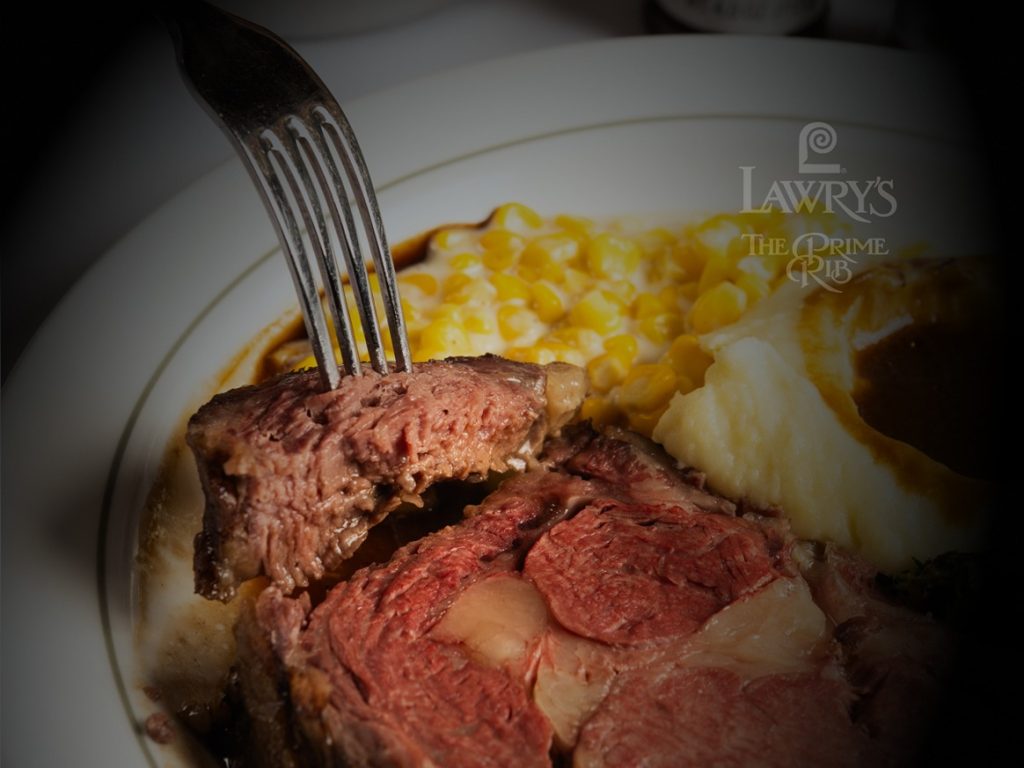
Sirloin or Rib Eye Steak?
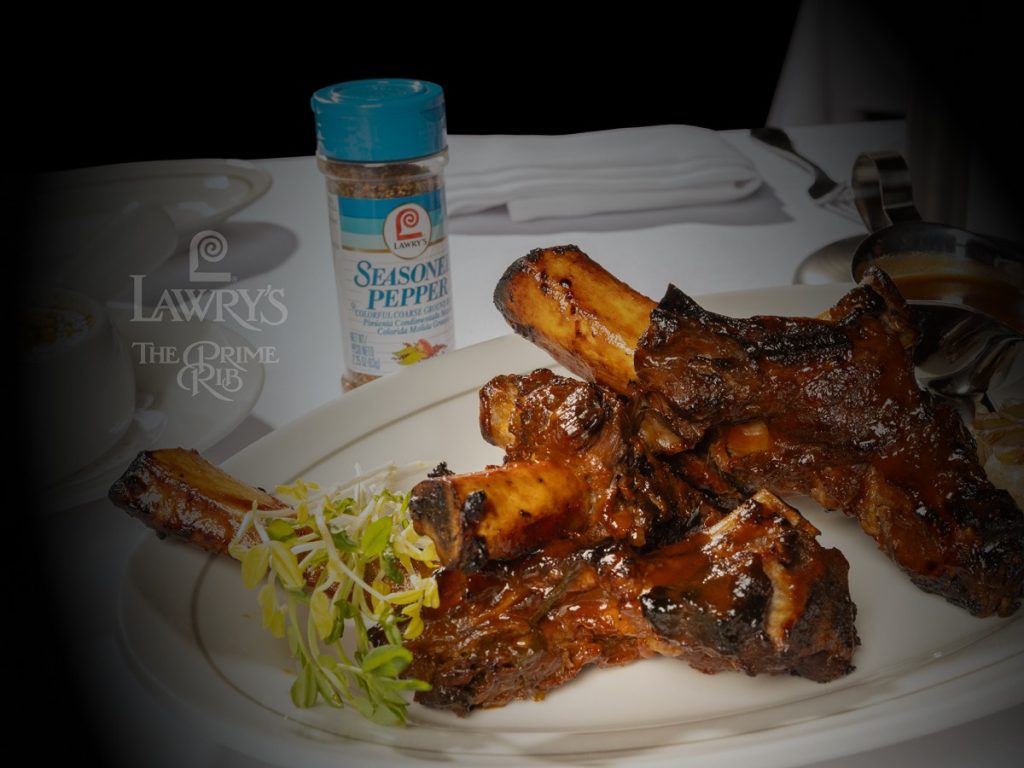
Grilled Steak vs Pan-Seared: What’s the Difference & Which Tastes Better
